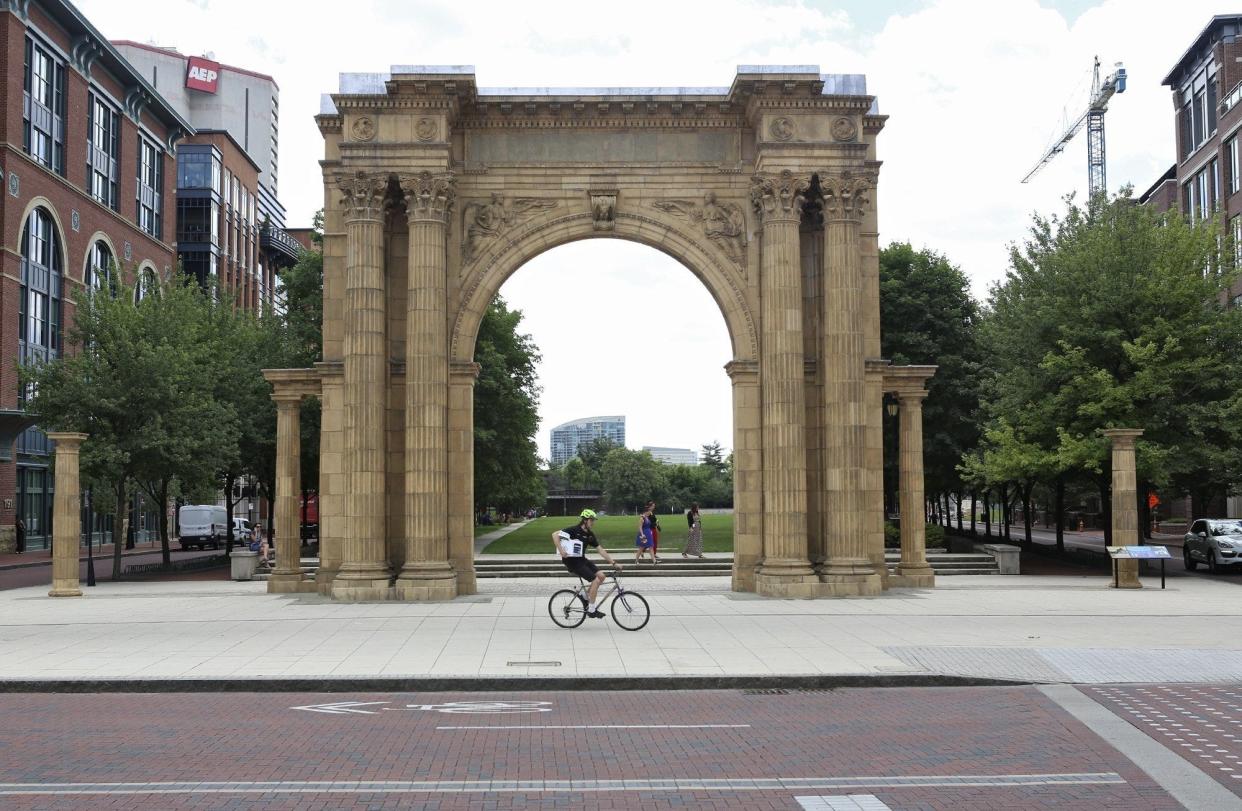Where did the arch in the Arena District come from?

Today, the arch in the Arena District makes for good sightseeing at McFerson Commons. But how did the nearly 400-ton landmark get there?
It turns out that the arch has actually moved twice, and its creation is rooted in the railroad industry.
Here's a look back on its history.
Take a look back: A visual history of Union Station arch in the Arena District of Columbus
The Union Station arch: a timeline
1850: The first passenger train comes to the Columbus Union Depot. It is as stationed at what is now the corner of High Street and Nationwide Boulevard.
1851: The city's first Union Station opens.
1874: Having doubled in size, the city is in need of a new train hub. A new Union Station is built, just north of the original one.
1897: With its population nearing 100,000, Columbus is due for another train station renovation. A third Union Station is built.
1899: The new Union Station's arcade is finished. It features two arches at each of its ends.
1976: Destruction of the Union Station arcade begins. Just before the last arch is set to be taken down, a judge saves the day.
1980: After the remaining arch is transported to donated land on Marconi Boulevard, near W. Hickory and Ludlow streets in the Downtown area, "Arch Park" is dedicated.
1999: The monument gets moved again, this time to its current location.
More: Did you know there used to be a prison in the Arena District?
Judge saves last piece of Union Station arcade
Train travel started to decline after World War II. Eventually, Columbus leaders determined that the city needed a convention center more than it needed its long-held train station.
Battelle headed the effort to get the Ohio Center, which would later become part of the Greater Columbus Convention Center, built in place of Union Station. It established the Battelle Commons Company., a group that discussed preserving the station's iconic arcade with the Ohio Historical Society. However, Battelle Commons Co. ultimately decided against spending money on the preservation.
At 6 p.m. on Oct. 22, 1976, demolition of the Union Station began unannounced in what preservationists dubbed the "Friday Night Massacre."
After hearing about the demolition, under quite the time crunch, county Prosecutor George C. Smith devised a plan to ensure that at least a portion of the arcade was preserved. He connected Ohio Historic Preservation Office administrator Judy Kitchen to attorney C. William Brownfield, with the goal of getting further demolition legally halted.
The next morning, Smith ran into another obstacle: The Ohio State football team was hosting a game against Purdue.
“Our next problem that Saturday afternoon was finding a judge who was home and not at the stadium," Smith later wrote.
Luckily, Smith found Judge George Tyack, who signed a temporary order to stop the destruction.
Brownfield took Tyack's order form right to Union Station and gave it to the demolition crew. He arrived only moments before the last remaining arch was set to be wrecked.
That arch now rests in the Arena District.
JNimesheim@dispatch.com
@JackNimesheim
This article originally appeared on The Columbus Dispatch: History of the arch in the Arena District

